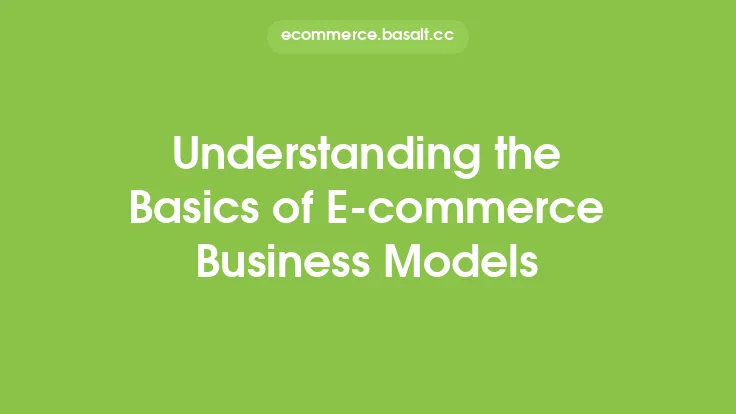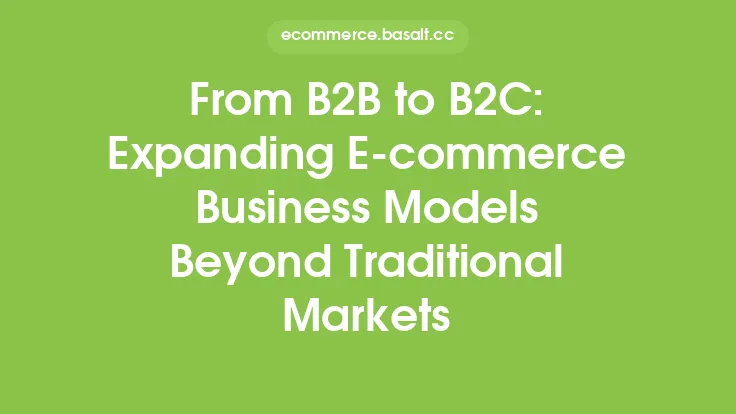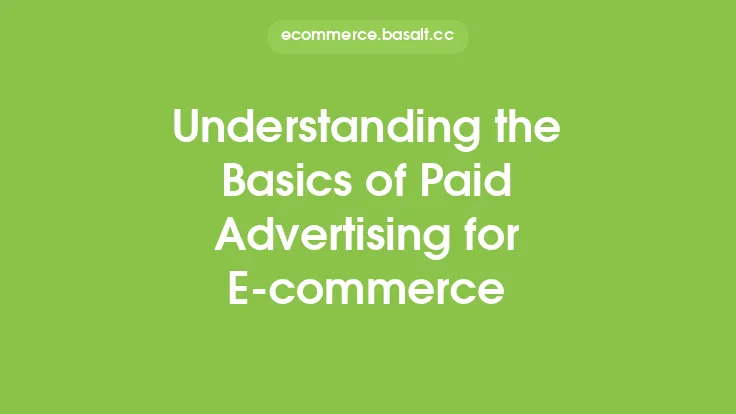In the world of e-commerce, businesses operate under various models, each with its unique characteristics, advantages, and target markets. Two of the most fundamental and widely recognized e-commerce business models are B2B (Business-to-Business) and B2C (Business-to-Consumer). Understanding the basics of these models is crucial for any e-commerce entrepreneur or business looking to establish a strong online presence and effectively reach their intended audience.
Introduction to B2B E-commerce
B2B e-commerce refers to the online transactions between businesses. This model involves a company selling its products or services to another business, often in bulk or with the intention of the buyer reselling these products. B2B e-commerce can take many forms, including wholesale transactions, manufacturing, and even digital services like software as a service (SaaS). The B2B model is characterized by its focus on building long-term relationships with other businesses, often requiring more personalized and customized service compared to B2C transactions. The sales process in B2B e-commerce tends to be more complex, involving multiple decision-makers and a longer sales cycle. However, the potential for high-volume sales and recurring business makes B2B a lucrative model for many companies.
Introduction to B2C E-commerce
On the other hand, B2C e-commerce involves businesses selling products or services directly to the end consumer. This is the model most people are familiar with, as it includes online retail stores, service providers, and digital content sellers. B2C transactions are typically characterized by lower purchase amounts compared to B2B, but the volume of transactions can be much higher. The B2C model focuses on providing a user-friendly, streamlined shopping experience to individual customers, with an emphasis on customer service, product variety, and competitive pricing. The sales cycle in B2C is generally shorter, with decisions often made on impulse or after minimal research.
Key Differences Between B2B and B2C E-commerce
Several key differences distinguish B2B from B2C e-commerce, including the target audience, marketing strategies, sales processes, and product offerings. In B2B, the target audience is other businesses, which means marketing efforts are often more focused on demonstrating value, building relationships, and showcasing expertise. In contrast, B2C marketing tends to focus on appealing to individual consumers' needs, desires, and preferences. The sales process in B2B is typically more consultative, involving negotiations and customized solutions, whereas B2C sales are more transactional, with an emphasis on ease and speed of purchase.
Marketing Strategies for B2B and B2C E-commerce
Marketing strategies also vary significantly between B2B and B2C e-commerce. B2B marketing often leverages content marketing, such as whitepapers, webinars, and industry reports, to establish thought leadership and credibility. Social media platforms like LinkedIn are particularly effective for B2B marketing, given their professional focus. In contrast, B2C marketing might rely more on social media platforms like Facebook, Instagram, and Twitter, where consumer engagement is higher. B2C marketing also frequently uses influencer marketing, email marketing, and search engine optimization (SEO) to reach a broader audience and drive immediate sales.
Technology and Infrastructure for B2B and B2C E-commerce
The technology and infrastructure requirements for B2B and B2C e-commerce can differ as well. B2B e-commerce platforms need to support complex pricing models, bulk ordering, and integration with other business systems, such as enterprise resource planning (ERP) and customer relationship management (CRM) software. They also require robust security measures to protect sensitive business information. B2C e-commerce platforms, while also needing to be secure, focus more on providing a seamless user experience, with features like easy product browsing, streamlined checkout processes, and mobile optimization.
Challenges and Opportunities in B2B and B2C E-commerce
Both B2B and B2C e-commerce models come with their own set of challenges and opportunities. For B2B, challenges include building and maintaining strong business relationships, managing complex logistics, and competing in a market where personal connections and trust play a significant role. Opportunities in B2B e-commerce include the potential for high-value, long-term contracts and the ability to specialize in niche markets. In B2C e-commerce, challenges include intense competition, the need for continuous innovation to meet evolving consumer expectations, and managing a high volume of customer interactions. Opportunities in B2C include the ability to reach a global market, leverage social media and digital marketing for brand awareness, and offer personalized shopping experiences through data analytics.
Conclusion
In conclusion, B2B and B2C e-commerce business models serve different markets and require distinct approaches to marketing, sales, and customer service. Understanding these differences is essential for businesses looking to succeed in the e-commerce landscape. Whether a company chooses to operate in the B2B, B2C, or both spaces, leveraging the right strategies, technologies, and mindset can lead to significant growth and profitability. As e-commerce continues to evolve, the fundamentals of these models will remain a cornerstone for businesses aiming to thrive in the digital marketplace.





